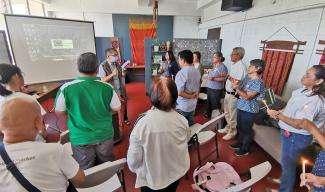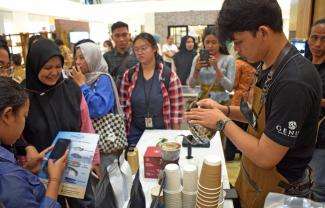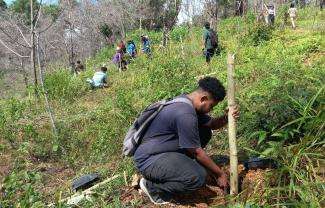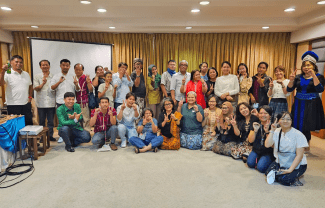Two years after being established by World Heritage Centre, subak (Bali paddy field irrigation system) took the initiative to estabslih the Forum Pekaseh Catur Angga Batukau consisting of 20 subak. This declaration is a milestone to keep maintaining and conserving the existence of subak as well as maintain “outstanding universal value†based on the Tri Hita Karana philosophy.
Forum Pekaseh Catur Angga Batukau was established through support from parties such as Udayana University, Ministry of Education and Culture, SEI and Samdhana on 11-12 May 2014 in Prana Dewi, Wongaya Gede Village, Penebel sub-district, Tabanan District.
Subak are literally a representation of Tri Hita Karana values of the Balinese that are universal and highly relevant to sustainable development. These important values made subak established as a World Cultural Heritage by UNESCO in June,2012. UNESCO establish four important areas in Bali as World Cultural Heritage sites, namely 1) Luhur Ulun Danu Batur Temple and Batur Lake in Bangli District, 2) Pakerisan water catchment in Gianyar district, 3) Subak and Catur Angga Batukau Temple in di Tabanan district, and , Taman Ayun temple in Badung district.
Forum Pekaseh Catur Angga Batukau have conducted regular meetings, board elections, developing customary rules (awig-awig), using drones to take aerial photos of the subak and participatory mapping training. A variety of activities that have been done are an important part of the action plan to unify the vision and develop togetherness among subak and pekaseh that are part of the Catur Angga Batukau World Cultural Heritage sites.
Awig-awig contains customary rules that have to be met by each pekaseh and krama subak as guidance in behaving particularly interactions and managing subak particularly in the WCH site of Catur Angga Batukau. Even though it is still in draft form, this initiative still needs appreciation because its main objective is to manage subak based on joint perspectives as a WCH site, developing cooperation for the conservation of subak and improving the welfare of krama subak which is just and prosperous.
The implementation of participatory mapping has been done 3-5 November 2014, held at Banjar Keloncing community hall, Wongaya village. This activity was a joint initiative after aerial photos were taken.
Initially, aerial photos taken with drones were done in Subak Jatiluwih, then this initiative was replicated by the Ministry of Education and Culture through the Bukapeta team in 19 other subak in the WCH area in Subak Catur Angga Batukau.




